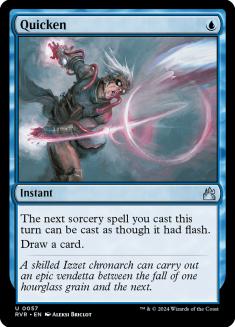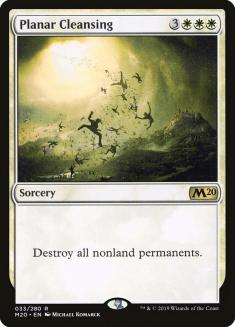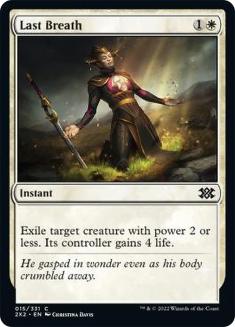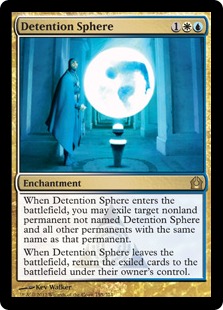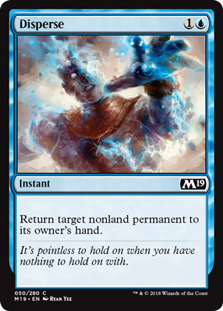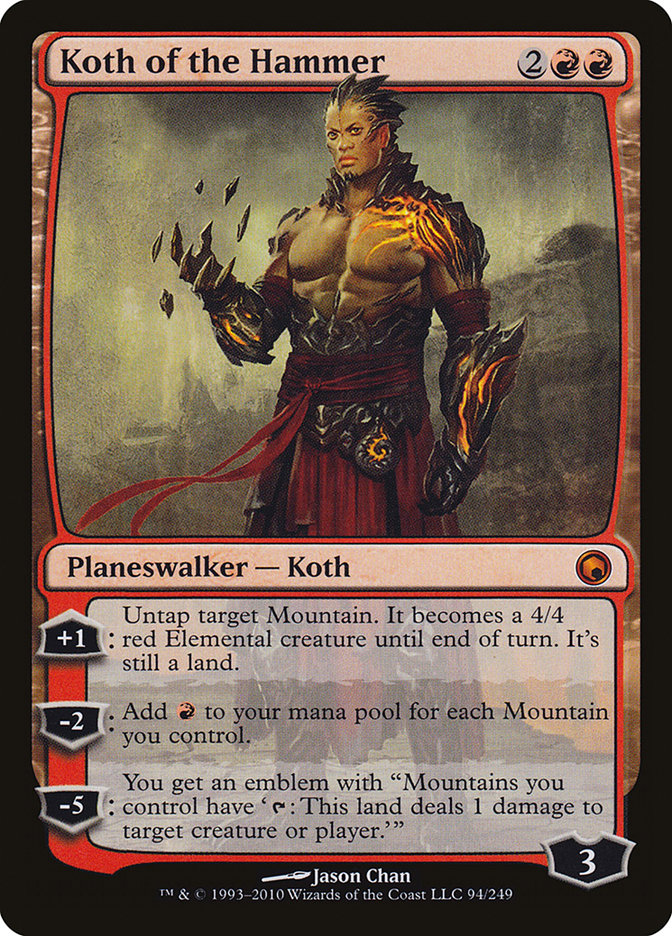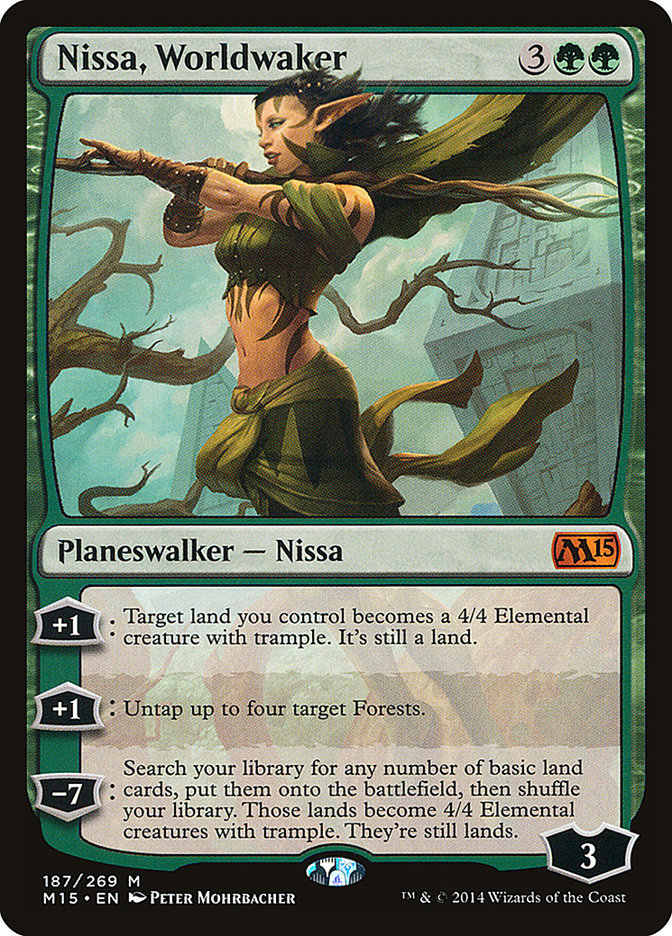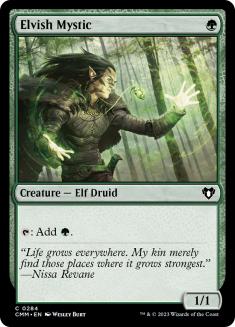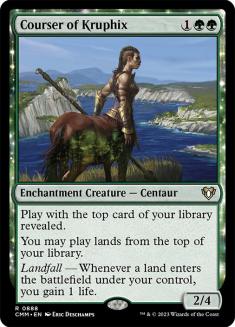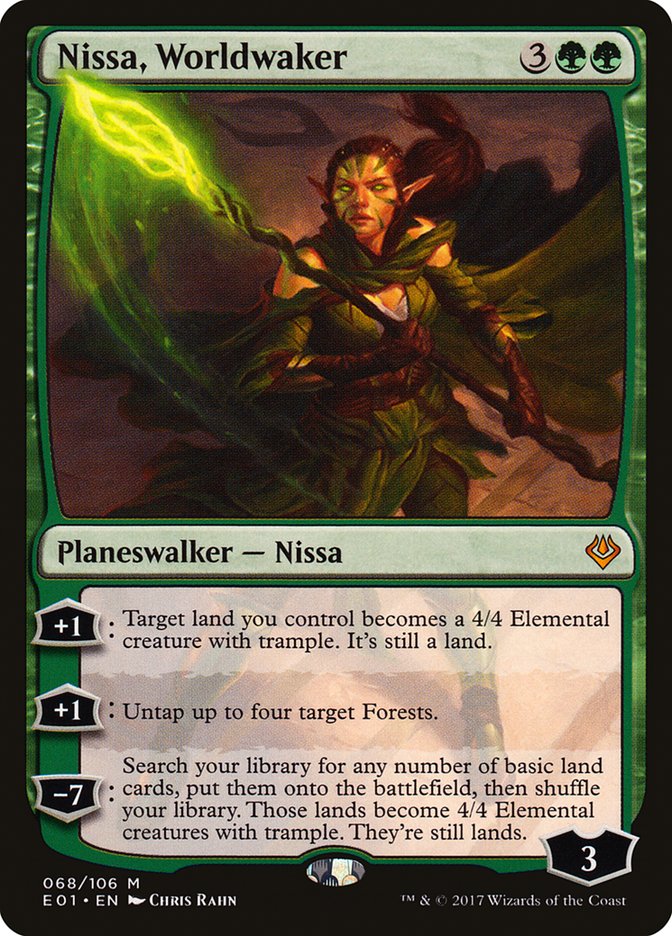
I’ve been engaged in a big struggle the last few weeks since Pro Tour M15. The struggle involves a simple question:
What am I going to play at the WMCQ?
After going over the question on my Facebook page, I had already
decided to take the trek to Indy for the WMCQ rather than fly out to the Season Three Invitational. Still, figuring out what exactly to play was a
struggle. I feel like I had great decks, but I just didn’t know which one to go with.
Thankfully, Rashad Miller took the decision out of my hands; this Sunday, I’ll be covering the event instead! I’ll be in Indianapolis with Rashad, Ray
Punzalan, and Brian Kowal. It was a hard decision to not play in the event since I feel very prepared for Standard right now.
For as much as players have complained about the ‘stagnant Standard’, I’ve been loving Standard for the last year even before I got on the Sphinx’s
Revelation plan. The big question that I was trying to grapple with was just how much PTM15 changed things.
In some ways, it seemed like the answer was “not much”. Looking at what people seemed to be choosing to play in the aftermath, there was a lot of same ol’,
same ol’ going on. Some of the choices that were apparent in looking at results made me actually wonder if people had bothered to play their decks against
the top performing decks from Portland or
not!
At the PTQ in Madison, I hung out, watching my friends play
Modern, and just enjoying the day. Most of the day, I played Magic Online – exclusively Standard – and just caught up with people, sometimes having a crew
of people watch me play this deck or that. There was also a bit of laughter at the difficulty I had navigating some of the features of Magic Online (I
couldn’t believe how difficult it was to complete some trades – the cards were in my trade binder, darnitall!), but I was glad that most of the time I
actually was just playing Magic.
It was all in the service of prep for the WMCQ. Winning it is something that I feel is quite achievable. Last year, I woke up late, drove like a banshee, and
barely made it to the event on time. I am so grateful to Adam and Morgan Jansen for helping me out, taking down my decklist as I dictated it to
them over the phone while I drove. Also, it was a great example to me of the importance of two things: knowing your deck so well you have it memorized and
having friends in the game that you can count on.
I ended up getting fourth place with my Esper Tokens deck, derived from a list that I received from Brian Davis a few months prior.
Creatures (4)
Planeswalkers (4)
Lands (23)
Spells (29)

The deck was pretty great, and about the only thing I didn’t care for in it was Warped Physique, which greatly underperformed and should have been a second
Far // Away. I revamped the deck slightly, and ended
up getting second place in a PTQ a few weeks later, losing in the finals to a friend of mine playing my Big [card name="Naya"]Naya[/card] I’d designed as an ‘answer’ to the
metagame. Unfortunately for me, it didn’t just answer the rest of the field, but also me!
To me, one of the most important things that you can do if you want to be on top of Constructed Magic is to not get tunnel vision and only see things from
the perspective of a single deck. In addition, you shouldn’t even look from the perspective of a single version of a single deck. Truly having an
understanding of what is happening in Magic at any time takes a ton of work, but this understanding does have great payoffs.
This isn’t to deny the value in specializing in a deck to gain a deep understanding of that deck, but if you don’t take a glimpse at the world through the
eyes of that second deck, you might end up continuing to play an archetype long after it has ceased to be a good choice. More subtly, you might position
your deck in such a way that it isn’t properly facing the new metagame.
When Matt Sperling was working on his prep for PTM15, I sent him my then-Top 6 decks in the metagame. Since then, my exact lists of interest have changed.
I’ve tested all of them, though not all to the same degree. And now, since I won’t be playing, I give them all to you.
#1 – U/W Planar Cleansing Control
#2 – U/W “Classic” Control
I still am of the opinion that U/W Control is the best choice in the current metagame. The big conundrum is simple: do you expect more small aggressive
decks, or do you expect more Planeswalkers? Right now, I expect more Planeswalkers.
This is a very fundamental distinction. The aggressive decks, especially small red decks, are incredibly difficult to beat with Planar Cleansing builds. On
the other hand, Planar Cleansing itself is a monster against nearly every planeswalker (Nissa being the exception). Ultimately, I currently only slightly
favor the Planar Cleansing build, and if I were actually to be playing at the WMCQ, I know I’d walk around the room before I turned in my final list.
Here is that list:
Creatures (1)
Planeswalkers (5)
Lands (15)
Spells (39)

On the chance that aggressive decks are a bigger portion of the metagame, I’d end up as a Detention Sphere list. This doesn’t assume, however, that
aggressive decks are the majority of the metagame, just that they are more represented than Planeswalkers. As such, it doesn’t go overboard trying to fight
aggression, it just has a Detention Sphere base. Here is that list:
Creatures (1)
Planeswalkers (5)
Lands (15)
Spells (39)

The difference between from the Planar Cleansing build to the Detention Sphere build is pretty simple:
Out:
In:
The first deck is only barely different from my Top 4 list at Grand Prix Chicago. If
you aren’t a fan of the use of so
many singletons in the deck, that’s fine. I will say this: the correct U/W list will have these properties:
2) Two true ‘finisher’ cards
3) 6+ Jace, Architect of Thought/Divination/Jace’s Ingenuity in the main
Bluntly, any other build is not ideal.
Yes, that means I think Floch’s list isn’t ideal.
The first thing to look at is something Floch has right: being an Elixir deck. Really, the question of Elixir or no is a simple one: what are the costs of
each choice? If you are an Elixir of Immortality deck, in something like 10% of games, you will draw an Elixir in an opening or near-opening hand and it
will be like a semi-mulligan. If it weren’t an Elixir, you would have a card that ‘does something’ in this slot, and this would further your immediate
needs in the game. On the other side, if you aren’t an Elixir deck, you often have to follow lines of play based on your deck having limited
resources. There are only so many counterspells, removal spells, or finishers. Sphinx’s Revelation might have to be cast for less than the full amount out
of respect for the resources you might need to discard.
These two sides are basically what are at odds. The anti-Elixir side though, is actually a fairly weak argument. Elixir decks discard as they are winning,
and being down a card by popping off an Elixir is actually not a big deal in a great number of games. In other matchups, where your opponent is also
throwing away cards to establish damage, losing a card for a small amount of lifegain is not a big deal. In either case though, the cost is usually “losing
a card”, and it only ends up being a loss some of the time. On the other hand, if you read people (even very talented people) talk about their experience
playing non-Elixir builds, you will constantly hear about how they have to cautiously marshal their resources. You can see that at nearly every moment of
the game after the initial survival wave, they are changing their play to non-optimal play in-the-now to have good game remaining in the end. There is a
cost to both choices, and it seems clear that the cost of no-Elixir is much higher. Point #3, above, is just about maximizing the performance
strengths of your deck if you do decide to be an Elixir deck, as the extra touch of card draw helps you find your recycled cards.
Where Floch’s build (and many others) fall short is in a complete reliance on the Elixir. If Elixir is the end-all and be-all of your plan, time is the
commodity that you’re actually placing at risk. In addition, though, if something happens to your Elixir, you aren’t really much of a deck anymore. In a
build with other finishers, if anything happens to your Elixir, you get to be just as good of a deck as any other non-Elixir build of U/W Control – not as
good, but still a great deck. Also, importantly, being an Elixir-only build, like being a no-Elixir build, encourages you to make bad plays. You need to up your Jace to win a non-concession game in an Elixir-only build, when minusing your Jace is actually the play you need to make to wrap
up a game with a bow on it.
Being a non-ideal list doesn’t mean you aren’t effective. Even an old, rickety train run by a drunk train conductor isn’t a train you want to get in front
of with your car. Still, that doesn’t mean that the kin of force produced in the crash couldn’t have been much more. Magic history is replete with examples
of decks that were improved upon after the Pro Tour or Grand Prix where they had their most high-profile success. I usually think about Charles
Gindy’s PT Hollywood-winning Elves list as an example of this. His deck was actually very good, but while I might not think it was ideally built, the
overarching form and structure of the deck was so powerful, it still was crushing.
If you are at all practiced with U/W Control, I wholeheartedly suggest you play it. Many of the specific details are certainly worth solving in any number
of ways, but I strongly urge that you follow my advice on the core of the deck.
#3 – Burn
This is the deck that I find most mind-blowing in the way it seems to be ignored by the metagame in the aftermath of the Pro Tour. Why aren’t more people
picking this deck up?
One of the big reasons, I think, is that the deck is actually incredibly hard to play. It is fairly easy to play at a low level of returns, where you can
beat your great matchups, or beat someone who is at roughly your skill level in a decent matchup. But, if you aren’t playing as well as your opponent, they
can often very easily capitalize on the small slip ups and turn wins to losses, in large part because the margins for victory are just so small.
U/W Control is another reason Burn can struggle. This matchup is actually very close, but every single close aspect of the matchup breaks towards U/W
Control. If the other player isn’t cautious, a Burn player can easily take this matchup. All things being equal though, expect U/W Control to win.
That simple liability could be a part of the reason people are ignoring Matt Sperling’s finish at the Pro Tour. Ultimately though, I know that I was going
to sling the fire if I couldn’t decide between the two variants of U/W that I had prepared above. Here is my current version of Burn:
Creatures (9)
Lands (17)
Spells (34)

I’ve been experimenting with several cards in the “one-of slot” that is currently occupied by Altac Bloodseeker. One of the cards that I’ve used in this
slot is Tajic, Blade of the Legion. Another is Eidolon of the Great Revel. That particular slot is well-suited to a creature just to increase the potential
damage output of the deck.
The danger of going down this path too far is that you water down the burn spells in your Burn deck too much.
Ultimately, I ended up preferring Altac Bloodseeker for this single card because of the potential that the Bloodseeker had in creating massive amounts of
damage at times. I think I was finally sold on it when, in a sideboarded game, I faced down a freshly cast Master of Waves, and between a Chained to Rocks
on the Master and a Lightning Strike on a Nightveil Specter, I just killed my opponent out of seemingly nowhere. Sperling, for his part, seemed to feel
like Eidolon of the Great Revel was a card that was dependent on the specific creatures that you might be facing. Given what seems to me to be an upswing
in both aggressive decks and Courser decks, Eidolon just feels like it is currently over the hill.
The first version of the Burn deck I gave to Sperling was a little less respectful of opposing creatures. Sperling’s initial take on Burn after getting my
build was much, much more close to Saito’s. With testing, Sperling started sliding towards my build. Similarly, as I’ve been testing more, I’ve started
sliding towards his. All told, to me this is a good sign–evidence of the underlying power at the heart of this archetype.
Do not pick up this deck without practicing it. You will not be rewarded for it (unless X-3 is your goal).
#4 – Stompy
I’ve been working on this deck a very long time, ever since I saw Mason Lange’s version. So often, the conversation I heard about this deck in
current Standard goes something like this:
“You should totally try out Stompy!”
“Ugh! I don’t want to lose to U/W Control every time!”
“But you don’t…”
“How could you beat them?! Ever?!”
Well, see for yourself:
While I don’t think Bradley Nystrom played this perfectly, I do think that it illustrates how you can beat U/W Control. In my experience, Stompy
is the deck to play if you are expecting to see these things:
-small creatures
Sometimes the conversation also goes into the virtues of Lifebane Zombie against this deck, but again, I just haven’t found that to be at all accurate. The
real problem for Stompy is Archangel of Thune and Tidebinder Mage, both of which actually cause the deck fits.
As luck would have it, at the Madison PTQ, while I was gunning Magic Online games, Mason himself came over, and we honed the Stompy deck together. I’m
really happy with where I currently have it ever since the inclusion of this card:
Oops. I meant, this card:
I thought this card was good when I saw it. What I didn’t realize was that the card was actually great.
I made room in Stompy for her immediately. Mason and I thought she might be a decent one- or two-of, so we played three just so we could draw it more
often. Pretty quickly, I was at four. Here is that list:
Creatures (30)
- 1 Scavenging Ooze
- 4 Brushstrider
- 4 Burning-Tree Emissary
- 4 Experiment One
- 3 Slaughterhorn
- 4 Elvish Mystic
- 4 Kalonian Tusker
- 3 Reverent Hunter
- 3 Boon Satyr
Planeswalkers (4)
Lands (5)
Spells (21)

This is a deck I’d like to have four Dryad Militant, four Reverent Hunter, and four Boon Satyr in. There simply isn’t room, and I’m not prepared to make
this a 66 card deck (probably 68 if we account for land). The big reason that Militants aren’t in the deck is Nissa, Worldwaker; I’ve had them in
both the main and sideboard of pre-Nissa builds.
Amazingly, Nissa, Worldwaker actually provides a similar function to Dryad Militant in some matchups. Dryad Militant is very good at punishing slower decks
like U/W Control and Mono-Black Devotion by simply getting a clock down that they have to respond to. Nissa, Worldwaker, on the other hand, acts less like
a Koth and more like a Stormbreath Dragon, providing another thrust of attack after the initial burst, one that can potentially end the game all on its
own.
I said earlier that Archangel of Thune is a huge problem for this deck, and it is. Unfortunately, Plummet is just incredibly narrow, and while it does an
important job, it isn’t Crushing Vines, and so in the current metagame I just don’t think there is enough room for the card.
The sideboard has a ton of singletons, but this is mostly because of finishing off copies from the maindeck (Reverent Hunter, Boon Satyr, Mending Touch,
Ranger’s Guile), or the law of diminishing returns. Given the explosive nature of the attack phase for some decks in Standard, Fog, for example, is an
incredible card in the correct matchup, but you rarely would ever want to draw a second copy. Unravel the Aether has actually proven to be a
better card than Reclamation Sage (removing a God can matter), but when Unravel the Aether is dead, a second one is horribly dead, and so
Reclamation Sage plays the role of the “safe second Unravel”. Garruk, Caller of Beasts has an incredibly powerful effect during a long grind, but it is
prohibitively expensive.
Meanwhile, there are three cards which have multiple copies. Setessan Tactics is just an incredibly powerful card versus Mono-Blue Devotion and any matchup
where creatures are going to be facing off against creatures. Bow of Nylea, while certainly usable against decks like Burn, is actually there for another
purpose: Bow of Nylea makes blocking horrible. Finally, Nylea’s Disciple rounds out the sideboard as a card to bring in when life total races are
potentially possible.
The one real question people ask about this deck is usually, “Why Mono-Green? Why not multiple colors?” The answer is the same answer I give when I talk
about one of the advantages of U/W Control over Esper Control:
Mutavault is one of the best cards in Standard. Playing Mono-Green means that you can actually run four copies of this card safely. In addition, as silly
as it sounds, sometimes you are drawing to a Rogue’s Passage to win the game. I’m actually trying to figure out how to fit in a second Rogue’s
Passage and have it make sense. Probably it won’t (24 lands is a lot of lands, and colored mana matters), but that’s how potent the card is.
Ultimately, the reason this deck isn’t higher on my list is simple: repetitions. I don’t have enough reps with the deck to know exactly how I’d like to
have my 75 cards arranged. If I had more time, I’d have a better sense of if this was my #1 deck or my #2 or #4 or what-have-you. As is, this deck is
definitely awesome, but I’d still play U/W Control or Burn over it.
#5 – GXX Planeswalkers
Here is what I know, and even though I’ve already said it, I’ll say it again:
Damn, Nissa is good.
If I wasn’t playing any of the above lists I’d play the following
Then, I’d find 48 other Magic cards to round it out, and figure out 15 sideboard cards.
RUG. BUG. Bant. Junk. Jund. Naya. I don’t know which one I’d play, but in that order, there are a ton of great cards to be considering. I think as long as
you end up with a four Nissa, Worldwaker list, you’re in the right place
The Rest of It
There are a ton of other lists to consider. Rabble Red is a great deck (the most successful red deck from the Pro Tour), but I kind of think that it has a
target on it right now. If I were playing at the WMCQ or the Invitational, I’d be rocking one of the five above lists. That doesn’t mean that there aren’t
other great lists to consider, but they aren’t lists I’d be playing.
Of course, I’ll “only” be playing in a $5K M15 Limited PTQ and then commentating on the WMCQ,
so I’m not sweating that final choice nearly as much as some of you may be. For you all, I wish you great luck this weekend. I hope you tune in and watch on Sunday. If you do play some Standard this weekend, my biggest advice is to be
prepared to beat Nissa, or go home.


